Dolby Vision is a variant of HDR that looks set to gain traction with manufacturers. But what is it, how does it work and how can you take advantage of the format?

Dolby has played a key role in the development of HDR for cinema and home theatre applications. But for the viewer, perhaps its most important contribution so far has been its advanced form of HDR, Dolby Vision.
Dolby Vision has the potential to improve consumers’ viewing experience by optimising the way their TVs deliver HDR pictures. It also gives producers more control over how their HDR programming appears.
Until CES 2017, it was assumed that Dolby Vision hardware (screens and Ultra HD Blu-ray players) needed a dedicated chip. However, it is possible to add Dolby Vision support via a firmware update to devices with powerful enough processors.
The standard HDR10 format is free for manufacturers, but Dolby Vision requires a licence fee. So what’s so special about Dolby Vision that hardware brands and consumers would pay extra? Quite a bit.
What is Dolby Vision?
The most significant advantage of Dolby Vision HDR over HDR10 is the addition of dynamic metadata to the core HDR image data. This carries frame-by-frame instructions that a Dolby Vision-capable display can use to portray the content as accurately as possible. Dolby Vision capable TVs combine the information from the source with an awareness of their own capabilities in terms of colour, brightness and contrast performance.
With HDR10 content, your HDR TV receives only static metadata – basic ‘global’ information on the content that applies to the entire film or TV show. It can’t provide a display with updates on how each specific frame should be shown. Nor does HDR10 carry the same facility for optimising the picture to the capabilities of the screen it’s showing on.
Denne historien er fra August 2017-utgaven av What Hi-Fi.
Start din 7-dagers gratis prøveperiode på Magzter GOLD for å få tilgang til tusenvis av utvalgte premiumhistorier og 9000+ magasiner og aviser.
Allerede abonnent ? Logg på
Denne historien er fra August 2017-utgaven av What Hi-Fi.
Start din 7-dagers gratis prøveperiode på Magzter GOLD for å få tilgang til tusenvis av utvalgte premiumhistorier og 9000+ magasiner og aviser.
Allerede abonnent? Logg på
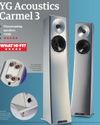
YG Acoustics Carmel 3
On paper, the Carmel 3 from Colorado-based speaker specialist YG Acoustics has a credibility problem. They cost a huge amount of money but are small, rather plain-looking two-way floorstanders.
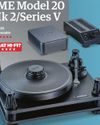
SME Model 20 Mk 2/Series V
SME launched the Model 20 turntable back in 1992. The partnering tonearm on our review sample, the now legendary Series V, dates back even further to 1986.
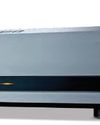
TOP FIVE LAUNCHES
Five products to look out for this month
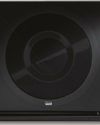
Real slim shady...
FOR Slim profile, superb dispersion, soundstage AGAINST Can get a little expensive
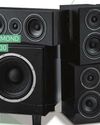
THE BIG PICTURE
This projector-based home cinema set-up aims to please

MOVIES ON THE MOVE
Great pictures and quality sound-wherever you are
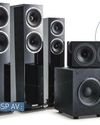
DREAM CINEMA
An incredible high-end home cinema experience, at a price

GAMING GEM
Serious gamers will be well served by this serious rig

CINEMATIC STUNNER
A truly immersive system for both gaming and movie nights

SOUNDBAR SUPERSTAR
The benefits of a surround set-up, without the fuss